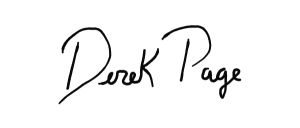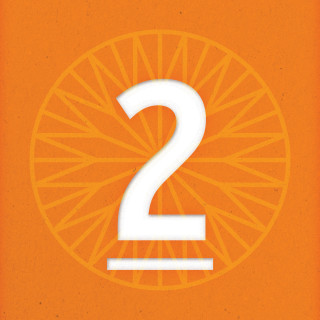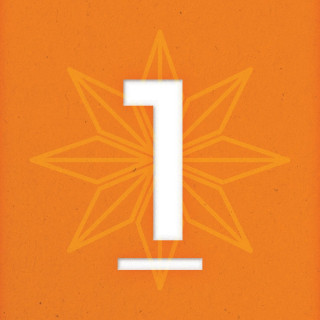Build a Résumé That Works & Wows | 5BYFIVE Creative
HINT: Market Yourself as a Brand
Listen to this blog post:
Creating—or refreshing—your résumé shouldn’t feel like an administrative chore; consider it a brand-building exercise. Just as we shape compelling campaigns for our clients, you can shape a document that instantly communicates who you are, what you do, and why you matter to employers.
It’s essentially, in and of itself, the showcase piece of your portfolio.
Below, we break down the design, layout, and strategic storytelling choices that turn a résumé into a persuasive marketing tool—whether you’re a new graduate entering the job market or a seasoned pro eyeing your next move.
Think Like a Brand, Not a List
Before a single line of text goes on the page, clarify your value proposition in your own head:
- What problem do you solve?
- Who benefits from your skills?
- How do you do it differently (or better) than others?
Your résumé should echo these answers throughout.
Lead with a concise branding statement at the top (two sentences max) that summarizes your niche, strengths, and career goals. Treat it like the elevator pitch of your personal brand—memorable, specific, and benefit-focused.
Design for Skimming (and Smiling)
Recruiters spend an average of 7-10 seconds scanning a résumé before deciding to keep reading. Yeah, I know. Pretty terrifying.
But clear hierarchy and thoughtful design could keep managers hooked and quickly differentiate you from other candidates.
Key Design Tactics
|
Element |
Why It Matters |
Key Insight |
|
Typography |
Communicates professionalism |
Stick with 1 or 2 modern, sans-serif fonts (e.g., Helvetica, Calibri). Keep headings 2–4 sizes larger and with a heavier font weight than body copy. |
|
White Space |
Prevents visual fatigue |
Use adequate margins (0.7”–1”) and paragraph spacing. Avoid dense blocks of text. |
|
Color Accents |
Guides reader and reinforces personal branding |
Limit to one brand color for headings or iconography. Ensure high contrast for ATS (Applicant Tracking System) readability. Keep body copy to a standard black on white background. |
|
Consistent Icons |
Adds visual cues without clutter |
You might consider using icons for sections (skills, contact info) but keep shapes and line weights uniform. |
Layout: Trust the Inverted Pyramid
To capture attention quickly and keep it, place your most impactful information in the top third—similar to how news articles are built.
The Education section should be placed at the top of your resume when it is the most relevant and impressive aspect of your qualifications, especially for recent graduates or those changing careers. But, if you have substantial work experience, especially in your field, then experience should generally come first.
A layout might look something like this:
- Branding Statement (your unique value proposition)
- Key Achievements Snapshot – three one-liners that quantify impact (e.g., “Increased social engagement by 130% in six months”)
- Professional Experience – bullet points with verbs and metrics (“Redesigned onboarding journey, reducing churn by 18%”)
- Skills & Tools – grouped in logical categories (Design, Data, Communication)
- Education & Certifications – relevant coursework or credentials
Bonus Tip: If you’re a creative or tech professional, add a mini-portfolio link or a QR code that launches your best work.
Empathy: Write for the Reader
Every recruiter or hiring manager has A LOT of résumés to sift through. To stand out and make it to the short pile, tailor your language:
- Use keywords from the job description—but do it organically.
- Translate role-specific jargon into results anyone can understand
- “Led OKR alignment” ❌
- “Aligned team goals to increase project delivery speed by 25%” ✅
- Swap job duties for outcomes. Duties say what you did; outcomes say why it mattered.
For Graduates and Career Changers…
Highlight Transferable Wins – When you’re low on work experience, remember that class projects, internships, volunteer roles, and part-time jobs can showcase leadership, problem-solving, or customer empathy.
Add Future-Facing Skills – Certifications (Google Analytics, Adobe, HubSpot) or micro-credentials show you’re proactive and serious about self-improvement and growth. Include them in a dedicated “Professional Development” section.
Keep the Robots Happy (ATS Optimization)
Remember when we said that hiring managers sift through A LOT of résumés? Yeah, well, most companies today rely on Applicant Tracking Systems (ATS) that scans all submitted résumés for a first pass.
Make sure your résumé clears the bot gate:
- Exporting to PDF preserves layout and formatting while remaining searchable and scannable.
- Avoid text overlays in any graphics as ATS software can’t “see” it.
- Use standard section headings (“Experience,” “Education,” “Skills”) to ensure proper indexing.
Bonus Tip: If you are a creative professional, have two versions of your resume. One that is fully branded with all of the bells and whistles to showcase your design acumen, and one that would be easier for ATS to scan.
You will mostly use the ATS version, but make sure you have the designed version to share when you KNOW a person will be looking at it.
Final Checklist
✅ Consistency – Dates aligned, bullet and font spacing identical, font sizes uniform. Oh, and make sure to check for any awkward line breaks.
✅ Metrics – At least 50% of bullet points include quantifiable results.
✅ One-Page Rule – Under 10 years of experience? Keep it to one page. Senior roles can run to two.
✅ Peer Review – Have a mentor or friend proofread. Typos can torpedo your credibility.
✅ Brand Alignment – Colors, tone, and keywords reflect the industry and your personal style.
Parting Advice: Make Noise. Make Sense. Get Noticed
A résumé is your personal billboard, visible to an audience of potential employers.
- Thoughtful design amplifies readability.
- Strategic storytelling highlights your value.
- Empathetic wording shows empathy by placing the reader’s needs first.
When those elements converge, you aren’t just listing qualifications—you’re marketing your brand.
Good luck out there.
You got this.

Derek Page






